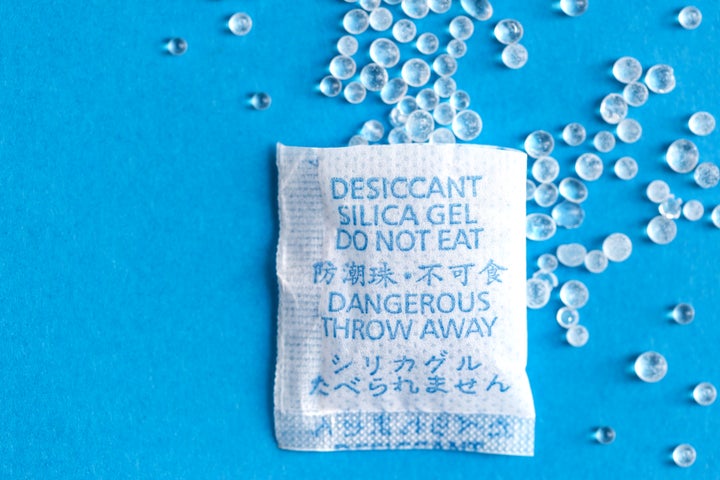
Listen carefully: if it says ‘do not eat’ on the packaging, don’t do it.
And while you may think silica gel sachets have the most dramatic packaging (you’d be right), that messaging is on there for a reason.
The little packets tend to pop up in packaging with all sorts of food and commercial products, covered with phrases urging you not to ingest it and to throw it away.
But – because we are all too curious for our own good – we obviously all want to know why we can’t eat it.
After all, the little white packets can easily be mistaken for food like salt or sugar sachets. It’s also worth remembering young children (and pets) may accidentally eat it without actually realising what it is.
Well, the first thing to know is that it is a drying agent, meant to stop moisture getting into various goods. It can take up to 40% of its mass in water.
Made from silicon dioxide (a combination naturally found in sand), the gel absorbs water out of the air to reduce the risk of mould and water getting into the product it’s usually stored with. Depending on the manufacturer, the gel’s form might be more like little rocks or beads.
Secondly, it’s usually not toxic but just has absolutely zero nutritional value, according to the US website Healthline.
So why can’t we eat it?
Well, it’s a major choking hazard, for one. The beads or rocks may look small, but they are made out of a chemically inert material which does not break down in our bodies at all. And that’s why we’re all told not to eat it, no matter what.
What’s more, on a rare occasion, manufacturers do cover it with a certain kind of chemical – cobalt chloride – and that will likely trigger nausea and vomiting, according to Healthline, as it can be toxic.
As the consortium Packaging Brands, which analyses European packaging, explained: “It is used in two forms; indicating and non-indicating. Indicating silica gel contains cobalt that causes the crystals to change colour when moisture is absorbed and as cobalt is toxic, care should be taken to avoid contact with food.”
If someone does ingest it and starts to choke or vomit, call for a medical professional as soon as you can. If they are choking, you might also need to administer back blows and thrusts to help dislodge the packet.
Healthline also recommends seeking emergency help if someone (particularly a child) has intense stomach pain, can’t pass gas or stool because it could mean they have a blockage.
If a pet eats silica gel, take them to the vet if they’re not pooing as much as normal, they’re vomiting or they have a swollen stomach.
Healthline does emphasise that, for the most part, the gel should probably exit your body completely whole – especially if you drink a lot of water.
Still, it’s definitely worth using them for what they’re meant for: absorbing moisture. You can even buy your own online – just be careful not to accidentally eat them...